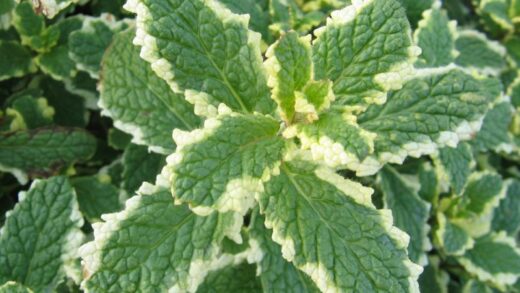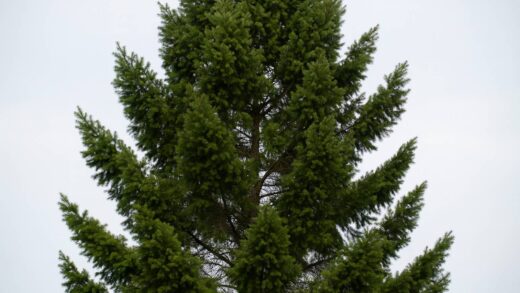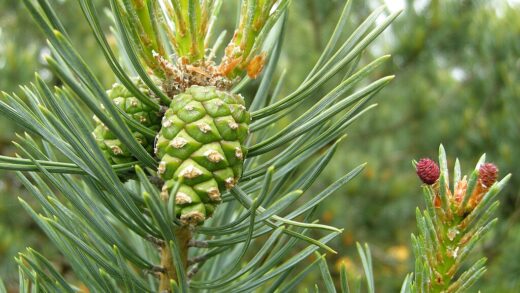Providing the appropriate nutrition for the clusius-tulip is a matter of subtlety and understanding its modest needs, which are reflective of its origins in soils that are not overly rich. Unlike heavily hybridized tulips that often require significant feeding to perform well, this species tulip thrives on a more restrained and targeted approach to fertilization. The primary goal is not to force lush, rapid growth, but rather to support the long-term health and perennial nature of the bulb. Over-fertilization can be far more detrimental than under-fertilization, potentially leading to weak, floppy growth, increased susceptibility to disease, and a reduced ability for the bulbs to naturalize. Therefore, a successful nutrient management strategy focuses on building healthy soil and providing supplements only when truly necessary.
The foundation of good nutrition for the clusius-tulip is not found in a bag of fertilizer, but in the soil itself. These tulips perform best in soil that is moderately fertile and, most importantly, has an excellent mineral structure and drainage. Before planting, amending the soil with well-decomposed organic matter, such as leaf mold or mature compost, can provide a slow, steady release of essential nutrients in a form the plant can easily use. This approach improves the soil structure and fertility simultaneously, creating a sustainable environment that supports the bulb’s entire life cycle without the need for frequent chemical inputs.
When supplemental fertilizer is considered, the balance of nutrients is far more important than the quantity. Clusius-tulips benefit most from fertilizers that are low in nitrogen and higher in phosphorus and potassium. Nitrogen encourages lush leaf growth, often at the expense of flower production and bulb health. In contrast, phosphorus is vital for strong root development, while potassium plays a key role in overall plant vigor, disease resistance, and the efficient transfer of energy back to the bulb after flowering. Understanding this nutritional balance is key to selecting the right product.
The timing of any fertilizer application is also a critical factor. Nutrients are only useful to the plant when it is actively growing and able to absorb them. Applying fertilizer when the bulb is dormant is ineffective and can lead to the nutrients leaching away into the environment. The most effective time to provide a nutritional boost is either at the time of planting in the autumn or in the early spring as new growth emerges. This ensures that the nutrients are available precisely when the plant needs them for root development and the demanding process of flowering and foliage production.
Understanding the role of key nutrients
To effectively manage the nutrition of the clusius-tulip, it is important to understand the role of the three primary macronutrients: nitrogen (N), phosphorus (P), and potassium (K). Nitrogen is responsible for promoting green, leafy growth. While some nitrogen is necessary, an excess can be particularly harmful to tulips, leading to soft, elongated foliage that is more susceptible to fungal diseases like tulip fire. It can also inhibit the proper development and storage of energy in the bulb, negatively impacting its ability to perennialize. For this reason, high-nitrogen lawn fertilizers should be avoided at all costs in areas where tulips are planted.
More articles on this topic
Phosphorus plays a crucial role in the plant’s energy transfer systems and is particularly vital for the development of a robust root system. Strong roots are the foundation of a healthy plant, enabling it to efficiently absorb water and other nutrients from the soil. Phosphorus is also directly linked to flower and seed production. Ensuring adequate phosphorus is available, especially when the bulbs are first planted, helps them establish quickly and build the strong base needed for years of reliable blooming. This nutrient is less mobile in the soil, so incorporating it into the planting hole is the most effective application method.
Potassium is an all-around health tonic for the clusius-tulip. It regulates many of the plant’s metabolic processes, including photosynthesis and the transport of sugars from the leaves down to the bulb for storage. A sufficient supply of potassium strengthens the plant’s cell walls, improving its overall sturdiness and enhancing its resistance to diseases and environmental stresses like drought or cold. It is particularly important during the post-flowering period, as it facilitates the critical process of replenishing the bulb’s energy reserves, which is essential for perennialization.
In addition to these macronutrients, clusius-tulips also require a range of micronutrients, such as calcium, magnesium, and iron, though in much smaller quantities. A healthy soil rich in organic matter will typically provide all the necessary micronutrients. This is another reason why amending the soil with compost or leaf mold is so beneficial, as it creates a balanced and biologically active medium that can meet all of the bulb’s nutritional needs naturally, reducing the reliance on synthetic fertilizers.
Fertilizing at the time of planting
The best and most efficient time to provide supplemental nutrients to clusius-tulips is at the time of planting in the autumn. This allows you to place the fertilizer directly in the root zone where it will be most effective as the bulb begins to develop its new roots. When preparing the planting holes, it is highly recommended to incorporate a source of phosphorus and potassium into the soil at the bottom of the hole, beneath where the bulb will sit. This ensures these essential nutrients are readily available to the emerging roots.
More articles on this topic
An excellent choice for this purpose is bone meal, a classic organic amendment that is naturally high in phosphorus and calcium. A small handful or a tablespoon of bone meal mixed into the soil at the base of each planting hole will provide a slow, steady supply of phosphorus to encourage strong root growth throughout the autumn and winter. Another good option is a specially formulated, slow-release bulb fertilizer. These products are designed with the optimal N-P-K ratio for bulbs, typically low in nitrogen and high in phosphorus and potassium.
When applying these fertilizers, it is important to mix them well with the soil in the bottom of the hole rather than placing the bulb in direct contact with a concentrated amount of fertilizer, which could potentially burn the new roots. After adding the amendment, add a thin layer of unfertilized soil before placing the bulb on top. This creates a small buffer while ensuring the nutrients are close by as the roots begin to extend downwards.
This single application of a slow-release, low-nitrogen fertilizer at planting time is often sufficient to support the clusius-tulip for several years, especially if it is planted in reasonably good soil. These are not heavy feeders, and this initial investment in soil preparation and targeted nutrition provides the foundation for long-term success. It is a simple step that sets the stage for healthy, perennial growth without the need for ongoing feeding.
Top-dressing established plantings
For established colonies of clusius-tulips that have been in the ground for several years, a light application of fertilizer in the spring can be beneficial, particularly if the soil is poor or if you notice a decline in vigor or flower production. This practice, known as top-dressing, involves spreading the fertilizer on the soil surface around the plants, where it will be carried down to the roots by rain or irrigation. The key is to be sparing with the application, as a little goes a long way with these species tulips.
The ideal time to top-dress is in the early spring, just as the new shoots are emerging from the ground. Applying fertilizer at this stage ensures the nutrients are available to the plant as it enters its most active period of growth. Using a balanced, slow-release granular bulb food is an excellent choice. Alternatively, a top-dressing of well-rotted compost can provide a gentle and natural nutrient boost while also continuing to improve the soil structure.
When applying granular fertilizer, be careful to avoid getting it directly on the emerging foliage, as it can cause burns. Lightly scratch the fertilizer into the surface of the soil with a hand cultivator or your fingers, and then water the area well to help activate the granules and start the process of moving the nutrients down into the root zone. A very light application is all that is needed; a general guideline is about one tablespoon per square foot of planting area.
It is important to reiterate that annual feeding is not always necessary for clusius-tulips. If your plants are healthy, flowering well, and spreading, they likely have all the nutrients they need from the soil. Top-dressing should be viewed as a corrective measure for poor soils or aging plantings, rather than a routine annual task. Observant gardening—paying attention to the performance of your plants—is the best guide to determining whether supplemental feeding is required.
The importance of soil pH and organic matter
Beyond the primary nutrients, the pH of the soil plays a critical, though often overlooked, role in the nutrition of the clusius-tulip. Soil pH affects the availability of nutrients to the plant’s roots. Even if nutrients are present in the soil, if the pH is too acidic or too alkaline, they can become chemically locked up and unavailable for absorption. Clusius-tulips generally prefer a soil that is neutral to slightly alkaline, typically in the range of pH 6.6 to 7.5.
Before planting, it is a wise practice to test your soil’s pH. If the soil is found to be overly acidic, it can be amended by incorporating garden lime or wood ash. This adjustment should be done gradually and based on the recommendations of the soil test. Creating the optimal pH environment ensures that the nutrients you provide—whether through organic matter or fertilizers—are actually accessible to the plant, maximizing the effectiveness of your efforts.
The role of organic matter in the soil cannot be overstated. Incorporating materials like compost, leaf mold, or well-rotted manure does more than just provide a slow release of nutrients. It dramatically improves soil structure, increases water retention in sandy soils and improves drainage in clay soils, and fosters a healthy ecosystem of beneficial soil microbes. These microbes are essential for breaking down organic matter and converting nutrients into forms that plants can absorb.
A soil that is rich in organic matter and teeming with microbial life is a self-sustaining system that can provide a steady and balanced diet for your clusius-tulips. This biological approach to fertility is often far more effective and sustainable in the long run than relying on repeated applications of synthetic chemical fertilizers. Building a healthy, living soil is the single most important investment you can make in the nutritional well-being of your tulips and your entire garden.


















